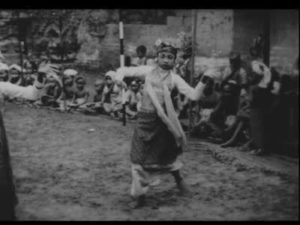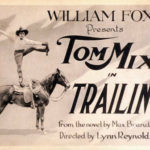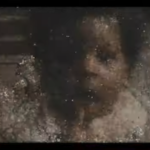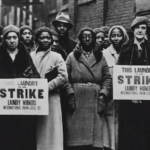Films from the National Film Registry Go Online, Free
To mark the holiday season, the U.S. Library of Congress has made freely available 64 motion pictures that are on its National Film Registry. The films in “Selections from the National Film Registry,” which are available online on the Library’s website, as well as on YouTube, are among hundreds that the Library has designated as worthy of permanent preservation due to their cultural, historical, and aesthetic significance.
Films in the National Film Registry are selected not as the “best” American films, but as works of enduring importance to American culture. The Librarian of Congress makes the annual selections to the Registry after reviewing hundreds of titles nominated by the public and conferring with Library film curators and members of the National Film Preservation Board.
The films that the Library is making available online from its National Film Registry are all the public domain. All but two of the 64 titles are available as freely downloadable files, and more films will be added periodically to the website.
Mike Mashon, head of the Library’s Moving Image Section, says that the downloadable files, which are high-resolution ProRes 422 .mov files, “will be of particular educational and scholarly benefit as well as for reuse by the creative community.”
Highlights from “Selections from the National Film Registry” include:
The Memphis Belle: A Story of a Flying Fortress (1944), William Wyler’s World War II documentary about the crew of a “Flying Fortress” bomber on its 25th and last bombing mission.
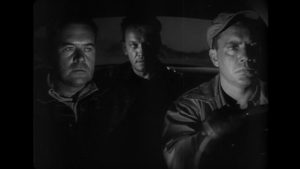 The Hitch-Hiker (1953), a film noir directed by actress Ida Lupino in which vacationers in Mexico pick up a homicidal maniac on the lam. The first film noir directed by a woman, it drew on the case of a psychopathic murderer. Lupino’s husband Collier Young wrote the screenplay with Robert L. Joseph with a story by the blacklisted Daniel Mainwaring.
The Hitch-Hiker (1953), a film noir directed by actress Ida Lupino in which vacationers in Mexico pick up a homicidal maniac on the lam. The first film noir directed by a woman, it drew on the case of a psychopathic murderer. Lupino’s husband Collier Young wrote the screenplay with Robert L. Joseph with a story by the blacklisted Daniel Mainwaring.
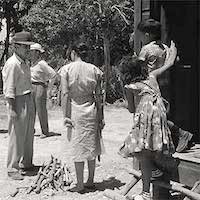 Trance and Dance in Bali (1936-1939, above), which anthropologists Margaret Mead and Gregory Bateson made in Indonesia. Their groundbreaking documentary, released in 1952, shows a Balinese kris dance: dancers depict life-protecting dragons and death-dealing witches. They enter violent trances and turn daggers against their breasts without injury until incense and holy water restore them.
Trance and Dance in Bali (1936-1939, above), which anthropologists Margaret Mead and Gregory Bateson made in Indonesia. Their groundbreaking documentary, released in 1952, shows a Balinese kris dance: dancers depict life-protecting dragons and death-dealing witches. They enter violent trances and turn daggers against their breasts without injury until incense and holy water restore them.
Modesta (1956, left), a Spanish-language film produced by Puerto Rico’s Division of Community Education. In it, Modesta, a peasant woman, rebels against her husband’s authoritarianism and organizes a Liberated Women League in her community.
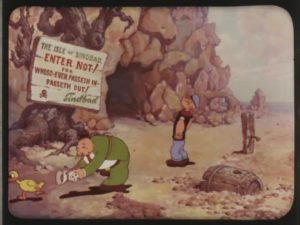 Popeye the Sailor Meets Sindbad the Sailor (1936, left), a two-reel Technicolor cartoon. The legendary sailors meet, and compete.
Popeye the Sailor Meets Sindbad the Sailor (1936, left), a two-reel Technicolor cartoon. The legendary sailors meet, and compete.
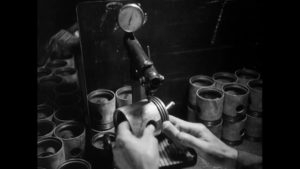 Master Hands (1936, lower left), a “mechanical ballet” shot on a General Motors automotive assembly line. The film, which features the manufacture of Chevrolets from foundry to finished product, is a paean to the designers of the factory mass production system. Filmed in Flint, Michigan months before the United Auto Workers won union recognition with their famous sit-down strikes, Master hands was added to the National Film Registry in 1999.
Master Hands (1936, lower left), a “mechanical ballet” shot on a General Motors automotive assembly line. The film, which features the manufacture of Chevrolets from foundry to finished product, is a paean to the designers of the factory mass production system. Filmed in Flint, Michigan months before the United Auto Workers won union recognition with their famous sit-down strikes, Master hands was added to the National Film Registry in 1999.
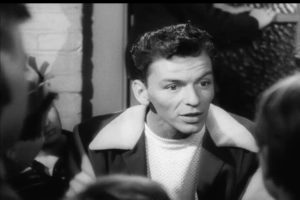 The House I Live In (1945, left), a musical short featuring Frank Sinatra in a plea for religious tolerance that won an honorary Academy Award but was among films that later earned Albert Maltz blacklisting as a leftist. Sinatra, apparently playing himself, takes a “smoke” break from a recording session. He sees more than 10 boys chasing a Jewish boy and intervenes. He says we are “all” Americans and that all religions are to be respected. The film was made to oppose anti-Semitism and racial prejudice at the end of World War II. Sinatra sings two songs, including “The house I live in.”
The House I Live In (1945, left), a musical short featuring Frank Sinatra in a plea for religious tolerance that won an honorary Academy Award but was among films that later earned Albert Maltz blacklisting as a leftist. Sinatra, apparently playing himself, takes a “smoke” break from a recording session. He sees more than 10 boys chasing a Jewish boy and intervenes. He says we are “all” Americans and that all religions are to be respected. The film was made to oppose anti-Semitism and racial prejudice at the end of World War II. Sinatra sings two songs, including “The house I live in.”

Duck and Cover (1951, lower left), a Cold War curio featuring Bert the Turtle explaining to schoolchildren how best to survive a nuclear attack. The film, an official Civil Defense film produced in co-operation with the Federal Civil Defense Administration, the safety commission of the National Education Association, and public schools of Astoria and New York, New York, explains the steps to be taken for maximum safety in the street or in school in the event of an enemy attack by atomic or other weapons.
— MIAN
Previous Post: Jayson Wall takes us Into the Archives
Next Post: 2017 Additions to the National Film Registry Announced

